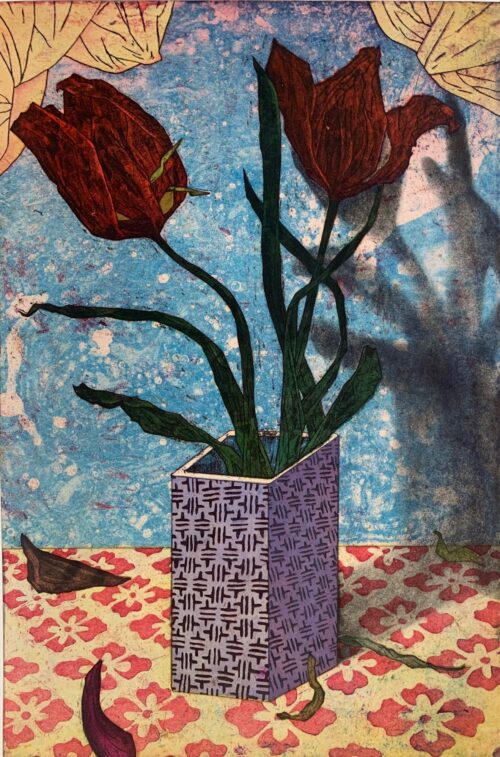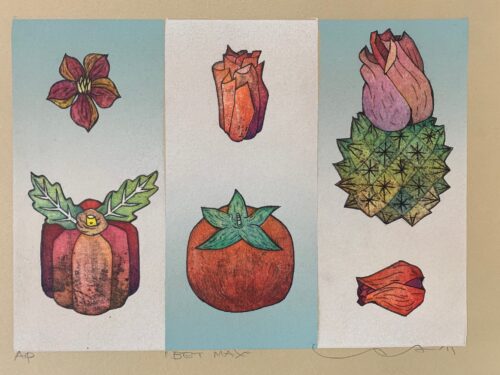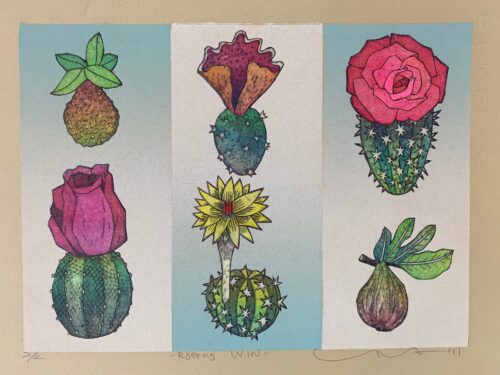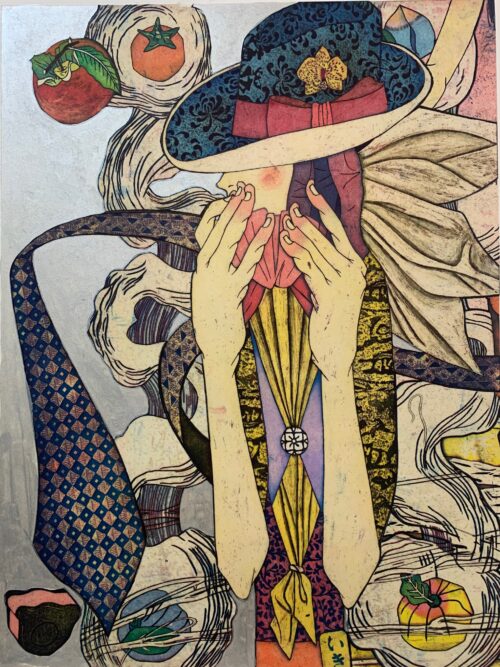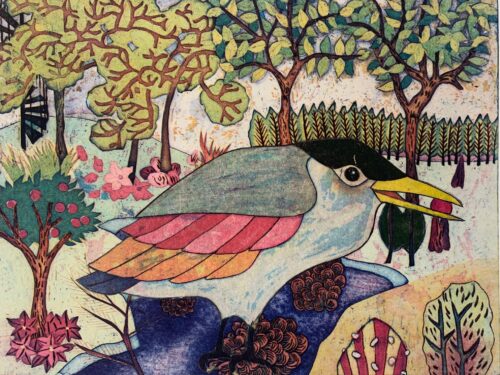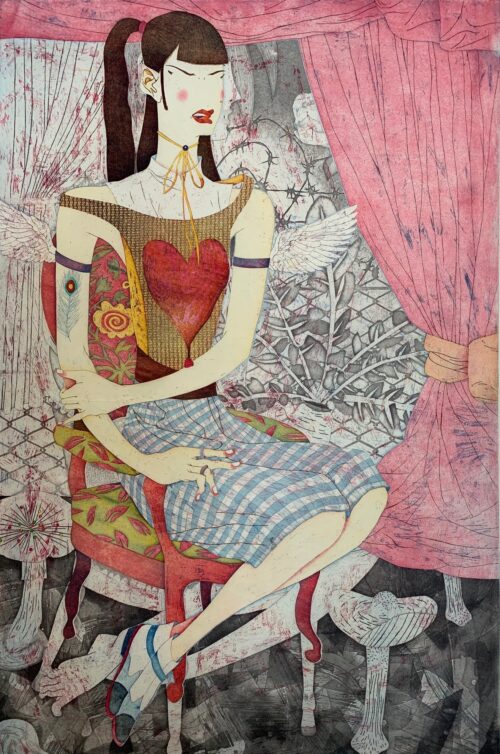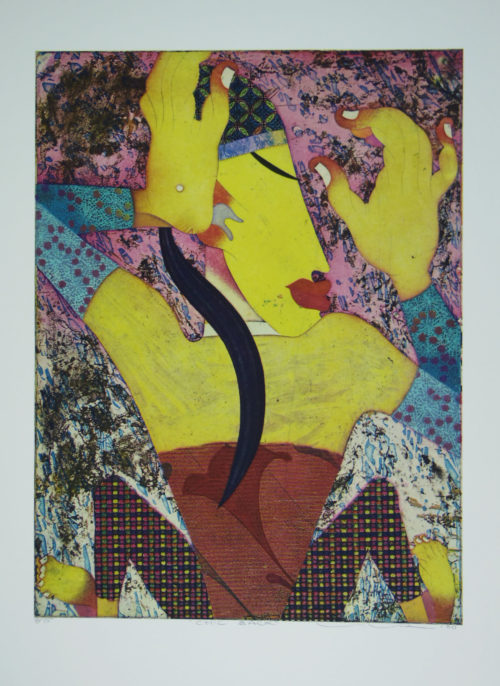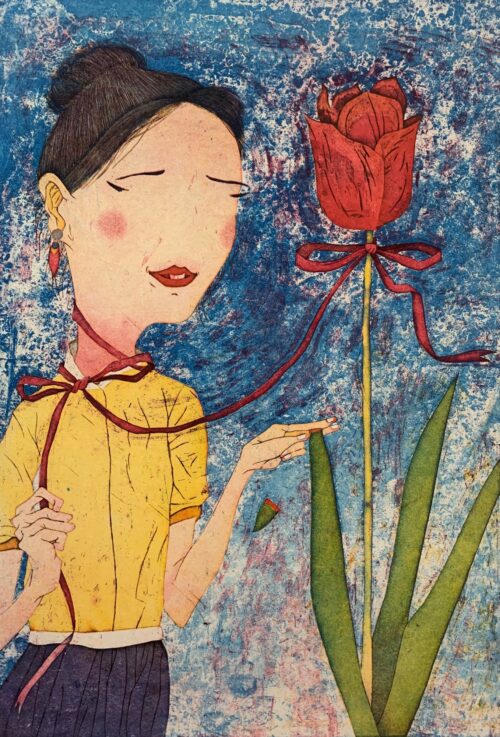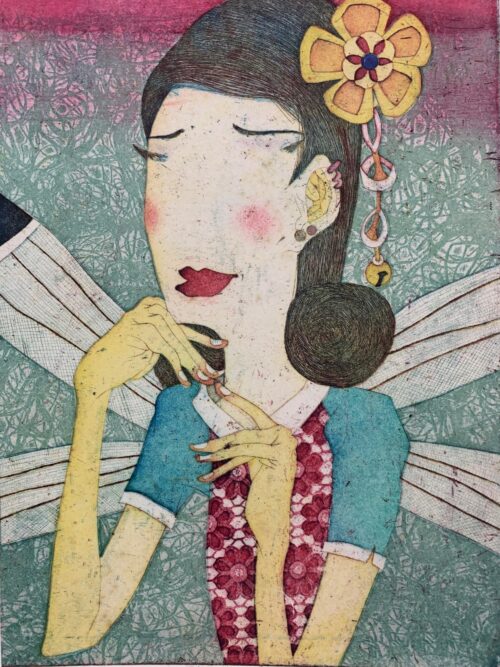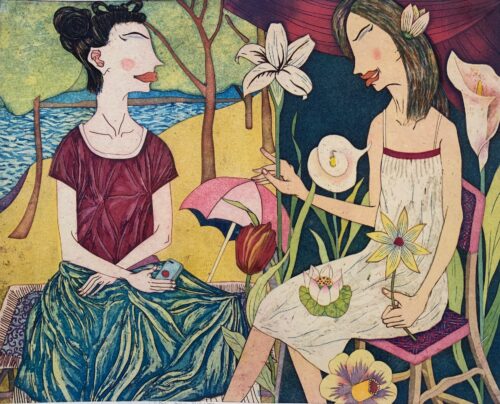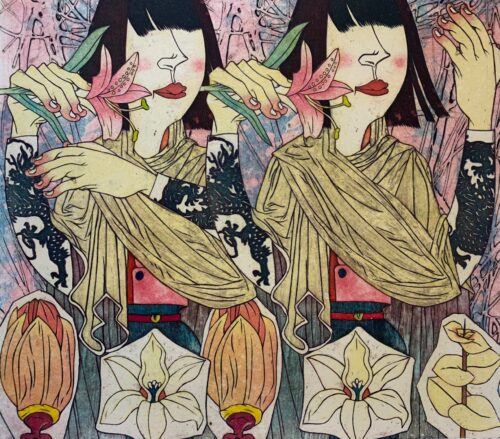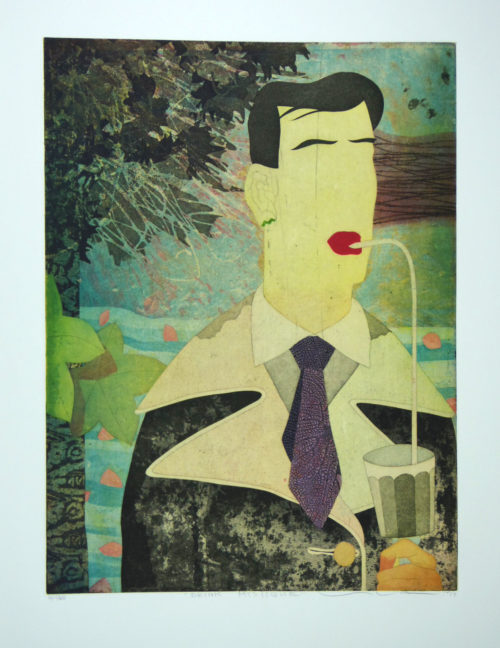STATEMENT
Japan is a land of contrasts. On the surface it appears that the culture has taken on thoroughly American and European characteristics, but behind this Western facade, Japan’s ancient and traditional philosophies have survived unchanged. I was raised among a mixture of East and West. For example, Japanese gardens are cultivated high atop thirty story Western skyscrapers, or people dine on McDonald’s hamburgers while watching Sumo wrestling. In my work I explore this chaotic coexistence.
There are many and varied points of view in modem Japan. Some survive from historic periods of significant aesthetic and philosophical development. Two periods in particular contribute to what is known as traditional Japanese art. During the first, in the middle of the 16th century, the Shogun lords closed Japan to all foreign interactions and evolved an art independent of Chinese models. The most important influence was the simplicity born in the spirit of the Zen sect. Art based on Zen was an art of suggestion rather than expression; it emphasized the importance of empty spaces and simple forms. The second period is the Edo era of the 17th century in which the Ukiyo-e school developed a popular art form, largely prints and reproductions, inexpensively designed for common people. Ukiyo-e art was decorative and brightly colored and often featured poster-like caricatures of national personalities (Yakusha-e).
In my work I draw from the ancient and the contemporary to express the mismatched combinations and hodgepodge which is Japanese daily life. The Zen aspect can be seen in my portraits. In this case, I always leave the face blank or flat and profile very simple. I do not draw eyes or noses on my portraits. The human face is always changing; the face at work is different from the face that enjoys the love. Aging changes the faces also. I want my prints to express this change. The portraits are left ambiguous so that the viewer can add his/her interpretation. This is the aspect of suggestion rather than expression. Also, I am interested in the humorous and colorful aspects of Ukiyo-e poster art. In my portraits I want to incorporate an element of wit through exaggeration and distortion. For emphasis, I fill in small areas with bright, whimsical colors. To express contemporary influences I use the figure dressed in Western style. My primary source of subject matter is photographs, frequently black and white, which I tear from books, magazines and newspapers. These materials are kept in my studio or in my bag, and whenever I am ready to begin a drawing for the print, I rummage through the wrinkled images.
There are small transitions in my work from time to time, and my interest is always based on unpredictable texture that is printed from the etched surface of the copper plate. My prints explore the complex relationship of paper, ink and etched plates to describe my thought, as well as the relationship which occurs between figures and space to express other human experiences. Always I try to investigate the maximum potential available to me as a printmaker.

